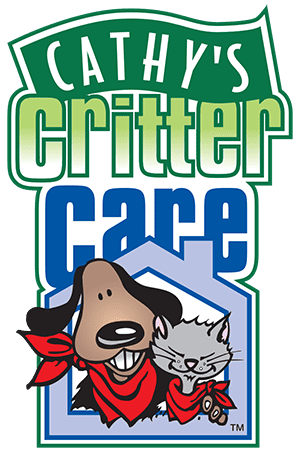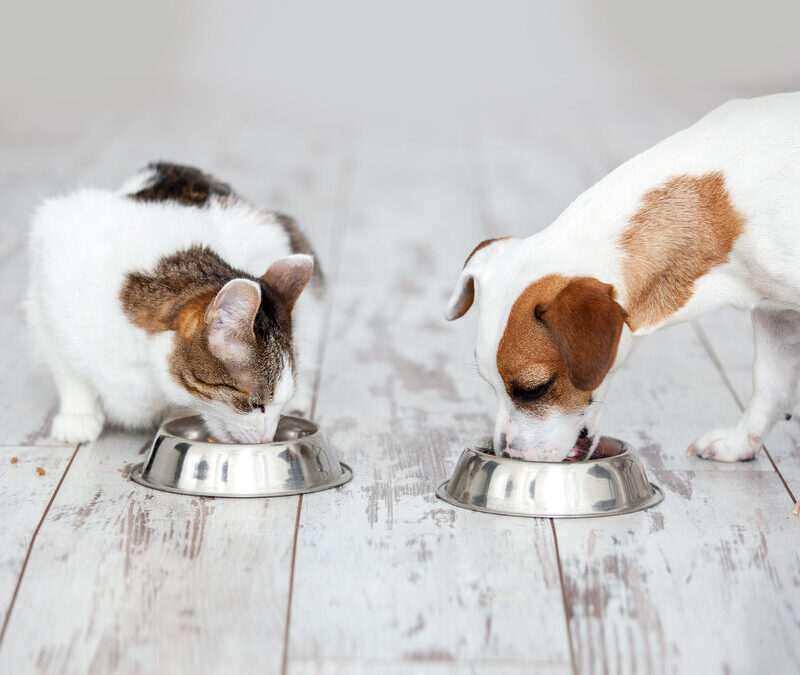Deciding what to feed your pets is no small task with the many pet food options available. Whether you’re experienced or new to the game, making sure your pet gets the right nutrition is key to their health and happiness. From understanding the basics of pet food to navigating the complexities of dietary needs across different life stages and health conditions, this article is your comprehensive guide.
We’ll discuss why choosing the right pet food matters, what considerations you should keep in mind, and how to read pet food labels effectively. Plus, we’ll examine the various types of pet food on the market, how to address breed-specific nutritional needs and the importance of identifying and managing food allergies. Whether you’re considering a diet switch or seeking advice on feeding frequency, this guide will assist you.
Join us as we take this journey to make sure our beloved pets lead long, healthy, and vibrant lives through proper nutrition.
What Is Pet Food?
Pet food is a specially formulated diet designed to meet the nutritional needs of domestic animals. It encompasses a wide range of products tailored for different species, including dogs, cats, birds, and fish, among others. The primary goal of pet food is to provide a balanced diet that supports the health and well-being of pets, ensuring they receive all necessary nutrients such as proteins, fats, carbohydrates, vitamins, and minerals.
The development of pet food has evolved significantly, driven by advances in veterinary nutrition and a deeper understanding of the dietary requirements of various pets. Manufacturers now offer a variety of options, including dry kibble, wet food, and specialized diets catering to specific health issues, life stages, or dietary restrictions. This diversity allows pet owners to make informed choices to best suit their pet’s individual needs and preferences, promoting a long and healthy life.
Why Is Choosing The Right Pet Food Important?
Choosing the right pet food is essential because it ensures balanced nutrition, which is necessary for the overall health and well-being of pets. A balanced diet helps in preventing a range of health issues, including obesity, diabetes, and heart disease. For instance, puppies and kittens require growth-focused formulas to support their development, while senior pets may need lower-calorie diets to maintain a healthy weight.
Pets with specific health needs, like diabetes or chronic kidney disease, can benefit from special diets formulated to manage these conditions. Additionally, the right pet food can support the pet’s activity level, with high-energy breeds needing more calories, and less active pets benefiting from weight management foods. Ultimately, making informed choices about pet food can lead to a happier, healthier life for pets.
Ensures balanced nutrition
Choosing the right pet food ensures balanced nutrition, which is key for a pet’s growth, energy levels, and overall well-being. It guarantees the intake of the essential mix of proteins, fats, carbohydrates, vitamins, and minerals needed for their daily activities and health maintenance.
Prevents health issues
Selecting an appropriate diet helps prevent various health issues, including obesity, diabetes, and heart disease. By providing pets with specialized diets that cater to their unique needs, the risk of chronic diseases is minimized, promoting a healthier and longer life for our pets.
Considerations For Choosing Pet Food
When selecting pet food, it’s important to consider the pet’s age, as nutritional needs vary greatly from puppies and kittens to adult and senior animals. Activity level also plays a significant role; high-energy breeds require diets rich in calories, whereas less active pets may need food that helps manage their weight. Additionally, health needs cannot be overlooked; pets with conditions like diabetes or kidney disease may benefit from specially formulated diets.
Understanding these factors ensures that pets receive the nutrition they need for a healthy, vibrant life.
Age
- Puppies/kittens need growth-focused formulas to support their rapid development and high energy levels.
- Senior pets require lower-calorie diets to help maintain their health and accommodate a slower metabolism
Activity Level
- High-energy breeds benefit from diets enriched with more calories to match their active lifestyles.
- Less active pets thrive on weight management foods that prevent obesity and support overall health.
Health Needs
- Pets with diabetes may require special diets designed to stabilize blood sugar levels and manage the disease.
- Those with chronic kidney disease benefit from kidney support formulas that help manage their specific nutritional needs and improve their condition.
Reading Pet Food Labels
Reading pet food labels is key to understanding what you’re feeding your pet. Protein sources should be listed first, indicating high-quality ingredients. Examples of high-quality protein sources include named meat meals (such as chicken meal or salmon meal) or real meat (such as chicken, beef, or fish).
It’s important to avoid artificial preservatives and be wary of fillers like corn and wheat, which may impact nutrition. Avoiding artificial preservatives is beneficial for pet health due to potential links to health issues, including allergies and cancer. Instead, look for natural preservatives, such as vitamin E (tocopherols), vitamin C (ascorbic acid), and rosemary extract.
Identifying these elements helps ensure you choose a diet that contributes positively to your pet’s health and vitality.
Understanding ingredients
Understanding the ingredients in pet food is crucial for ensuring your pet receives a nutritious diet. High-quality pet foods prominently list protein sources at the top, indicating a diet rich in essential nutrients. For example, seeing “chicken” or “beef” as the first ingredient is a good sign, as it suggests that the food contains a significant amount of real meat.
Protein sources listed first
Protein sources being listed first is a sign of high-quality pet food, providing the essential amino acids necessary for muscle growth, repair, and overall health. Examples include “chicken,” “lamb meal,” or “fish meal,” which indicate that the product is made with substantial amounts of these proteins.
Avoiding artificial preservatives
Choosing pet food that avoids artificial preservatives is important for your pet’s health. Artificial preservatives, such as BHA, BHT, and ethoxyquin, have been linked to potential health risks. Opt for natural preservation methods, such as vitamin E (tocopherols), vitamin C (ascorbic acid), and rosemary extract, to ensure safety and quality.
Identifying fillers
Be vigilant about fillers like corn and wheat, which are often used to add bulk without significantly enhancing the nutritional value of pet food. Recognizing these helps in selecting a nutrient-dense diet for your pet. Fillers can lead to unnecessary weight gain and may not provide the same level of nutrition as whole grains or vegetables.
Corn and wheat as common fillers
Corn and wheat, common fillers in many pet foods, may not provide the optimal nutrition for your pet. They can contribute to weight gain and may not be as digestible as other, more nutrient-rich ingredients such as brown rice, barley, or sweet potatoes.
Their impact on nutrition
The use of fillers like corn and wheat can negatively impact the nutritional quality of pet food. It’s crucial to choose products with minimal fillers to ensure your pet receives the best possible nutrition for a healthy life. Look for foods that use higher-quality grains or grain-free alternatives to support your pet’s health and well-being.
Types Of Pet Food
The variety of pet food available caters to the diverse nutritional needs and preferences of pets. Dry food is convenient and cost-effective, supporting dental health by reducing plaque buildup. Wet food, with its higher moisture content, is beneficial for hydration and can be more appealing to picky eaters.
Raw diets mimic a pet’s ancestral diet, offering unprocessed nutrients, though they require careful handling to prevent bacterial contamination. Prescription diets are vet-recommended for specific health issues and, while often more expensive, are formulated to address and manage these conditions effectively. Understanding these options allows pet owners to make informed decisions that enhance their pets’ health and well-being.
| Type of Food | Benefits | Potential Risks | Recommended For | Specific Health Issues Addressed |
|---|---|---|---|---|
| Dry Food | Convenient, cost-effective, supports dental health | Lower moisture content | General use, pets with dental health needs | – |
| Wet Food | Higher moisture content, appealing to picky eaters | Higher cost, shorter shelf life once opened | Pets needing extra hydration, picky eaters | – |
| Raw Diet | Mimics a pet’s ancestral diet, potentially improved coat condition and energy levels | Risk of bacterial contamination, requires careful handling, potential for nutritional imbalances | Owners willing to manage risks, seeking natural diet options | – |
| Prescription Diet | Formulated for specific health issues, vet-recommended | Often more expensive | Pets with specific health conditions | Urinary tract health, food allergies, kidney disease, obesity, diabetes |
Dry food
- Convenient and cost-effective, making it a popular choice for many pet owners.
- Supports dental health by helping to reduce plaque buildup.
Wet food
- Higher moisture content, which is beneficial for pets needing extra hydration.
- Often more appealing to picky eaters due to its texture and flavor.
Raw diet
- Mimics a pet’s ancestral diet, providing unprocessed nutrients.
- Requires careful handling to prevent bacterial contamination and ensure safety.
- Benefits observed: Improved coat condition, and higher energy levels.
- Potential risks: Nutritional imbalances, pathogens.
Prescription diet
- Vet recommended for addressing specific health issues.
- Often more expensive, but formulated to effectively manage and improve health conditions.
- Specific health issues addressed: Prescription diets can be tailored for pets with urinary tract health issues, food allergies, kidney disease, obesity, diabetes, and more, providing targeted nutritional support to manage these conditions.
Pet Breed And Food Choice
The breed of a pet significantly influences its dietary needs. Large breeds may require food that includes joint support to prevent health issues common in bigger dogs, while small breeds benefit from smaller kibble sizes that are easier to chew and digest. Additionally, some breeds have specific nutritional requirements due to their energy levels, size, and potential hereditary health conditions.
Understanding these breed-specific needs helps pet owners select the most appropriate and beneficial food, ensuring their pets maintain optimal health and vitality throughout their lives.
Specific breed nutritional requirements
Understanding the specific nutritional requirements of different breeds is essential for optimal health.
Large breeds need joint support
Large breeds benefit from diets that include ingredients for joint support, helping to prevent mobility issues.
Small breeds require smaller kibble sizes
Small breeds thrive on diets with smaller kibble sizes, which are easier for them to chew and digest.
Breed-Specific Nutritional Requirements
| Breed | Nutritional Requirement | Recommended Food Type | Ingredients to Look For/Avoid |
|---|---|---|---|
| German Shepherds | Joint support, high energy | Dry food with glucosamine, high-protein | Look For: Glucosamine, Omega-3 Fatty Acids; Avoid: High-fat content |
| Labrador Retrievers | Weight management, joint support | Low-calorie, joint-supporting | Look For: L-carnitine, Glucosamine; Avoid: Excessive calories |
| Dachshunds | Weight management | Low-calorie, small breed specific | Look For: Fiber-rich ingredients; Avoid: Excessive calories |
| Beagles | Weight management | Weight management formula | Look For: High-protein, low-fat; Avoid: Fillers like corn and wheat |
| Persian Cats | Hairball control, dental health | Specialized kibble, wet food | Look For: Fiber for hairball control, dental formulas; Avoid: Artificial colors |
| Siamese Cats | Lean protein for muscle maintenance | High-protein wet or dry food | Look For: Real meat as the first ingredient; Avoid: By-products |
| Great Danes | Joint support, controlled growth rate | Large breed puppy food, joint-supporting adult food | Look For: Controlled calcium levels, Glucosamine; Avoid: Rapid growth formulas |
| Chihuahuas | Small kibble size, high energy | Small breed formula | Look For: Small kibble, high-quality protein; Avoid: Fillers and artificial preservatives |
By tailoring pet food choices to the specific needs of their breed, pet owners can better support their pet’s health and well-being, ensuring they lead a happy and healthy life.
Feeding Frequency
The feeding frequency of pets should be tailored to their life stage and individual needs. Puppies and kittens require multiple small meals throughout the day to support their rapid growth and high energy levels. Adult pets, in general, do well with two meals a day, which helps maintain a stable energy level and supports their health.
For senior pets, adjustments may be necessary to accommodate a slower metabolism, possibly requiring fewer calories or smaller, more digestible meals. Adapting feeding routines to match these stages ensures pets receive the right amount of nutrition without overfeeding or underfeeding, promoting their overall well-being.
Puppies and kittens
Multiple small meals throughout the day are essential to support their rapid growth and high energy needs.
Adult pets
Feeding typically twice a day is optimal for maintaining their health and energy balance.
Senior pets
Adjustments for slower metabolism may involve reducing calorie intake or offering smaller, more digestible meals to match their changing nutritional needs.
Identifying Food Allergies
Identifying food allergies in pets is important for their health and comfort. Symptoms such as itching and skin irritation, along with gastrointestinal upset, can signal food sensitivities or allergies. Recognizing these signs early allows pet owners to adjust their pet’s diet accordingly, often necessitating the elimination of specific ingredients suspected of causing the allergic reaction.
Consulting a veterinarian is essential in diagnosing and managing food allergies, ensuring pets receive a diet that supports their well-being without triggering adverse reactions.
Symptoms of food allergies
- Itching and skin irritation: Key signs of food allergies, causing discomfort and potential skin damage.
- Gastrointestinal upset: Symptoms such as vomiting and diarrhea indicate a possible allergic reaction to food.
To further enhance this section, below is a detailed markdown table that includes common allergens, symptoms, alternative ingredients, and a brief overview of the elimination diet process:
| Common Allergens | Symptoms | Alternative Ingredients | Elimination Diet Process |
|---|---|---|---|
| Beef | Itching, skin irritation | Venison, Duck | 1. Remove all common allergens from the diet |
| Dairy | Gastrointestinal upset | Pea Protein, Fish | 2. Introduce a single protein source for 8-10 weeks |
| Chicken | Chronic ear infections | Rabbit, Kangaroo | 3. Monitor for symptom improvement or recurrence |
| Wheat | Licking paws, face rubbing | Tapioca, Sweet Potato | 4. Gradually reintroduce common allergens one at a time to identify the specific trigger |
| Soy | Vomiting, diarrhea | Lentils, Chickpeas | 5. Consult a veterinarian for guidance and adjustments |
| Corn | Hives, swelling | Quinoa, Barley |
Transitioning To A New Food
Transitioning pets to a new food requires a careful and gradual process to avoid digestive upset. Mixing the new food with the old over a period of 7-10 days allows the pet’s digestive system to adjust to the new diet. Monitoring for signs of gastrointestinal distress during this period is key to ensuring the transition is smooth and does not adversely affect the pet’s health.
This methodical approach helps pets adapt to their new diet while minimizing potential discomfort or nutritional imbalances.
Gradual transition process
Implementing a gradual transition process is key to successfully switching to a new food, ensuring the pet’s comfort and health.
Mixing new food with old food over 7-10 days
Gradually mixing new food with old over 7-10 days allows for a smooth adjustment to the new diet, reducing the likelihood of digestive disturbances.
Monitoring for digestive upset
Monitoring for digestive upset throughout the transition is essential, enabling timely intervention to prevent or address any adverse reactions.
Reliable Pet Food Information Sources
Finding reliable sources of information on pet food is important for making informed decisions about your pet’s diet. Veterinarian recommendations offer personalized advice based on your pet’s specific health needs, ensuring that dietary choices support overall well-being. Reputable pet food reviews provide insights from independent testing and consumer feedback, highlighting the quality and effectiveness of various brands and formulas.
To ensure the credibility of pet food reviews, look for evidence of independent testing and an absence of conflicts of interest. Reviews should be based on scientific research, nutritional analysis, and unbiased consumer experiences rather than promotional content from pet food manufacturers. When seeking veterinarian recommendations, consider asking specific questions to get the most relevant advice for your pet.
These questions could include:
- What are the nutritional requirements for my pet’s breed, age, and health condition?
- Are there any ingredients or types of food you recommend avoiding for my pet’s specific needs?
- How does my pet’s current health condition influence their dietary needs?
- Can you recommend a diet plan or specific brands that would be most beneficial for my pet’s health and lifestyle?
Together, these resources empower pet owners to choose the best possible nutrition options, contributing to the health and happiness of their pets.
Veterinarian recommendations
Veterinarian recommendations provide tailored advice based on the pet’s health, ensuring the chosen diet optimally supports their specific health needs. It’s important to engage in an open dialogue with your veterinarian, sharing any observations about your pet’s preferences, behavior, and any adverse reactions to current foods.
Reputable pet food reviews
Reputable pet food reviews offer valuable insights through independent testing results and consumer feedback, aiding pet owners in making well-informed nutritional choices for their pets. Look for reviews that detail the methodology of testing, the criteria for evaluation, and any potential biases to ensure you’re getting trustworthy information.




